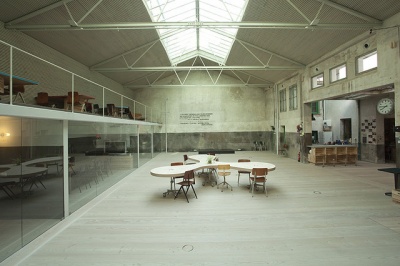(The world's first factory was the Venice Arsenal (founded 1104) in Venice, Italy, where, several hundred years before the Industrial Revolution, ships were mass produced on assembly lines using manufactured parts. The Venice Arsenal apparently produced nearly one ship every day and, at its height, employed 16,000 people.
Apart from that, Matthew Boulton's Soho Manufactory in Birmingham is widely regarded as the first modern factory.
In more recent times, factories were built in the late 18th century in British colonies and were simply buildings where a large number of workers gathered to perform hand labor, usually in textile production. This was more efficient for administration and distribution of raw materials to individual workers.
Inventions such as the steam engine and the power loom were employed in cotton mills to create the industrial factory of the 19th century, where precision machine tools and replaceable parts allowed greater efficiency and less waste.
Henry Ford further revolutionized the factory concept in the early 20th century, with the innovation of mass production. A product such as an automobile was built by highly specialized workers situated alongside a series of rolling ramps. This concept dramatically decreased production costs for virtually all manufactured goods and brought about the age of consumerism.)
Madrid - HUB( is a home for social innovators and entrepreneurs - thoughtfully crafted to feed, inspire and ignite the heart of the innovation community. Our goal is to bring together a diverse community of action-oriented thinkers, doers and leaders in a dynamic, intelligent ecosystem, driving collaborative solutions for a better world.)
Coventry - Cathedral
(Those who envisioned just what Notre Dame or Chartes Cathedral would look like when completed made plans that they would never see completed. Early workers on cathedrals worked toward a common purpose of building something lasting and strikingly beautiful, and were contributing to a vision of the future, but once again were not likely to ever see that vision come to fruition. Instead the planners and early builders of these magnificent buildings looked far ahead, knowing they were building something amazing.)



No comments:
Post a Comment